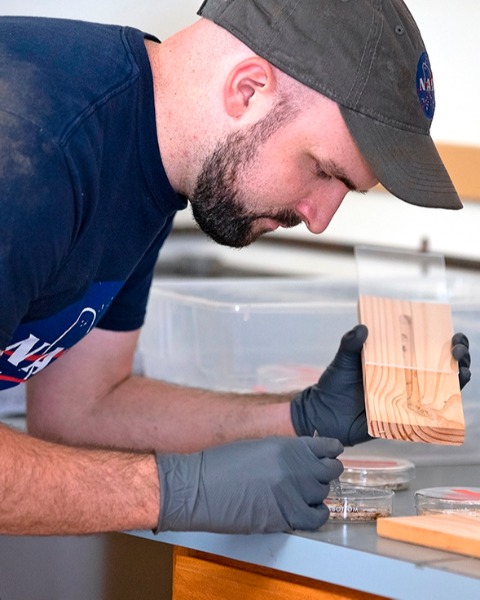MUVE
10-Minute Paper
10-min: MUVE, Urban Pest Control: Termites
The use of an essential oil adjuvant to improve the efficacy of heat treatments targeting the western drywood termite
On-Demand

Daniel Perry
Procter & Gamble
Mason, Ohio
Dong-Hwan Choe
University of California
Riverside, California
Presenting Author(s)
Co-Author(s)
Colonies of drywood termites (Blattodea: Kalotermitidae) are difficult to treat due to their cryptic nature. Besides several chemical options, the use of heated air to create lethal temperatures for the termites within the infested wood is considered as a non-chemical treatment option. Even if heat can be effective in killing the termites, the presence of hard-to-heat areas and potential risk of heat damage for plastics and other heat-sensitive items are recognized as important drawbacks. To address these challenges, we tested if the incorporation of a volatile essential oil would increase the overall efficiency of heat treatment for drywood termites. Using field-collected individuals of the western drywood termite, Incisitermes minor (Hagen) scaled-down wooden arenas were placed in a gas chromatography oven to simulate several conditions of heat treatment. A simulated structural heat sink was also included in some experiments. When there was no heat sink, the 2-h treatment at 47.7 °C achieved 100% mortality by day 7. However, when there was a heat sink, 49.5 °C was necessary to achieve 100% mortality. The injection of a small amount of volatile essential oil in the arena increased the overall effectiveness even with the presence of a heat sink, resulting in 100% mortality at only 45.6 °C. The ability to achieve complete control of the termites even at sub-target temperatures could improve the overall efficacy of the heat treatment while reducing the potential risks of heat damage. Semi-field research with an artificially infested structure had similar results and will also be discussed.

